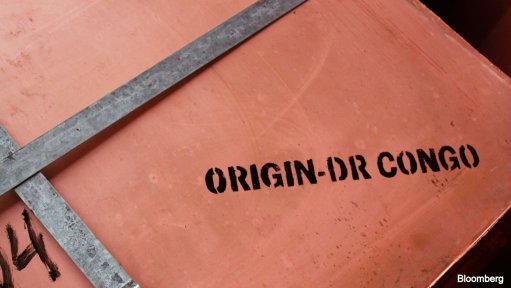India showing signs of lower coal proclivity for power projects
KOLKATA (miningweekly.com) – Though early days, it appears India’s proclivity for coal for generating electricity may be easing.
The government of the central state of Chhattisgarh, with one-third of the country’s coal reserves, has declared that it would not approve any new coal-based thermal power projects in the region. This barely days after the western state of Gujarat also announced that no new coal-based thermal power would be approved for construction.
Significantly, almost at the same time, the country’s largest thermal power producer, State-run NTPC, operating 22 coal-based power plants, with aggregate generating capacity of 41 580 MW, said that it would not be constructing any more coal-based power plants over the “next few years to reduce its carbon footprint”.
Instead, the power utility announced an investment plan worth $3.52-billion to set up a 5 GW ‘solar park’ in Gujarat, the largest in the country, scheduling it for completion by 2024. This forms part of the predominantly thermal power producer’s goal to add 32 GW of renewable power generation capacity to its portfolio by 2034.
NTPC is constructing a 1 600 MW coal-based thermal power plant in Chhattisgarh with the government announcing that this will be the last coal-based power plant in the state. According to the state government, operational thermal power plants in the region are not only meeting energy demand of the region, but also exporting electricity to other states. In view of the falling generating costs for renewable energy, Chhattisgarh will add solar power capacity in the state to meet incremental future energy demand.
According to the Chhattisgarh government, while electricity demand in the state is about 4 500 MW, aggregate generating capacity of all thermal power plants located in the state is 20 000 MW, and despite exports to neighbouring states, many of these plants are being forced to operate at plant load factor of below 50%.
As per NTPC’s plans, the power utility is drawing up solar power projects in the states of Madhya Pradesh, Uttar Pradesh and Bihar. The objective is to bundle electricity generated from solar projects with that generated by thermal power plants and achieve cost efficiencies through better management of ‘peak’ and ‘off-peak’ power demand across industrial and household sectors.
However, according to some officials in power generating companies, one of the reasons for coal partially losing its status as a "most favoured" fuel is government's expected cracking of the whip on companies that are tardy in implementing new emission standards.
The government, led by the Environment, Forest and Climate Change Ministry had promulgated revised emission standards specifying sulphur dioxide and nitrogen dioxide emission limits and mandatory installation of flue gas desulphurisers at all operational thermal power plants in the country.
But thermal power companies have consistently missed deadlines on these, first in 2015 then again in 2017 forcing the government to set a new deadline of 2022.
Thermal power companies claim that installing the necessary equipment to adhere to new emission norms entail capital expenditure that would increase the cost of thermal power generation at a time when the costs of renewable energy are steadily falling.
Tentative signs of a shift out of coal-based power generation are also being attributed to challenges faced by companies in securing debt funds to finance such projects. Most international lending institutions in developed countries have virtually pulled out of funding coal-based projects. At the same time, domestic lending institutions, led by government owned banks, are already burdened by Rs3-trillion worth of stressed or nonperforming assets in the domestic power sector and are in no position to extend fresh credit to fund power projects.
Comments
Press Office
Announcements
What's On
Subscribe to improve your user experience...
Option 1 (equivalent of R125 a month):
Receive a weekly copy of Creamer Media's Engineering News & Mining Weekly magazine
(print copy for those in South Africa and e-magazine for those outside of South Africa)
Receive daily email newsletters
Access to full search results
Access archive of magazine back copies
Access to Projects in Progress
Access to ONE Research Report of your choice in PDF format
Option 2 (equivalent of R375 a month):
All benefits from Option 1
PLUS
Access to Creamer Media's Research Channel Africa for ALL Research Reports, in PDF format, on various industrial and mining sectors
including Electricity; Water; Energy Transition; Hydrogen; Roads, Rail and Ports; Coal; Gold; Platinum; Battery Metals; etc.
Already a subscriber?
Forgotten your password?
Receive weekly copy of Creamer Media's Engineering News & Mining Weekly magazine (print copy for those in South Africa and e-magazine for those outside of South Africa)
➕
Recieve daily email newsletters
➕
Access to full search results
➕
Access archive of magazine back copies
➕
Access to Projects in Progress
➕
Access to ONE Research Report of your choice in PDF format
RESEARCH CHANNEL AFRICA
R4500 (equivalent of R375 a month)
SUBSCRIBEAll benefits from Option 1
➕
Access to Creamer Media's Research Channel Africa for ALL Research Reports on various industrial and mining sectors, in PDF format, including on:
Electricity
➕
Water
➕
Energy Transition
➕
Hydrogen
➕
Roads, Rail and Ports
➕
Coal
➕
Gold
➕
Platinum
➕
Battery Metals
➕
etc.
Receive all benefits from Option 1 or Option 2 delivered to numerous people at your company
➕
Multiple User names and Passwords for simultaneous log-ins
➕
Intranet integration access to all in your organisation


















